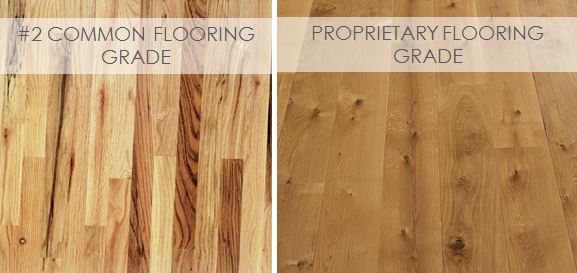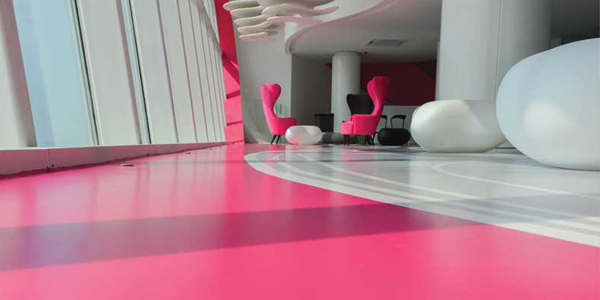Have you ever wondered about the best flooring options for each room in your home? The type of flooring you choose can have a big impact on both the appearance and functionality of the space. Whether you’re deciding on flooring for your kitchen, living room, basement, balcony, bedroom, or bathroom, each room has its unique considerations. But don’t worry, in this article, you’ll learn all about the different flooring options available for each room and how they can enhance the aesthetics.
Let’s start with the kitchen, a bustling area that sees a lot of foot traffic, spills, and changes in temperature. Hardwood floors offer a timeless and warm aesthetic that complements various kitchen styles. If you want something similar but more moisture-resistant, engineered wood can be a great alternative. On the other hand, porcelain or ceramic tiles are durable, easy to clean, and come in a wide variety of styles. Luxury vinyl flooring has also become a popular choice for kitchens due to its durability, water resistance, and affordability. Stay tuned to discover more about the aesthetics of different flooring options for other rooms in your home. Choosing the right flooring for your home can significantly influence both its appearance and functionality. Your choice will often depend on the specific room in question – the kitchen, living room, basement, balcony, bedroom, or bathroom. Each room has its unique considerations and demands, requiring a distinct approach when choosing flooring.
Kitchen Flooring Options
Let’s begin with the kitchen – the heart of many homes and a place that experiences high foot traffic, spills, and various temperatures. Hardwood floors offer a timeless, warm aesthetic that pairs well with many kitchen styles, from rustic to modern. The natural beauty of hardwood can enhance the overall appeal of your kitchen. Engineered wood can be an excellent alternative, offering a similar look with more resistance to moisture. This makes it a practical choice for kitchens where spills are common. Engineered wood can handle moisture better than solid hardwood, reducing the risk of warping or damage.
Alternatively, porcelain or ceramic tiles are hard-wearing, easy to clean, and come in a vast array of styles. These tiles can withstand heavy foot traffic and are highly resistant to stains and moisture. The variety of designs and colors available allow homeowners to find tiles that perfectly complement their kitchen decor. Recently, luxury vinyl flooring has also gained popularity in kitchens due to its durability, water resistance, and affordability. Luxury vinyl flooring can mimic the look of hardwood or tiles while offering enhanced durability and easy maintenance. It is a practical and budget-friendly option for busy kitchens.
Living Room Flooring Options
The living room is where you welcome guests and gather with family. Comfort, style, and durability are all important factors here. Once again, hardwood floors shine, offering both elegance and longevity. Hardwood floors bring warmth and character to any living room, and their natural beauty can add a touch of luxury to your space. If you’re after a more budget-friendly option, consider laminate flooring. Today’s high-quality laminate options can closely mimic the look of real wood, offering an affordable alternative without compromising on aesthetics. Laminate floors are also more resistant to scratches and dents, making them ideal for high-traffic living areas. Additionally, a plush carpet can create a warm, cozy atmosphere in living areas, providing a comfortable surface for relaxation. However, remember that carpets may require more maintenance to keep them looking fresh.

Basement Flooring Options
Moving onto the basement, it’s important to keep in mind that this space often faces issues like moisture and cold temperatures. Therefore, it’s crucial to select flooring that can handle these conditions. Vinyl flooring is a great choice for basements – it’s water-resistant, affordable, and available in a variety of designs. Vinyl can mimic the look of natural materials like wood or stone, without the risk of moisture damage. Similarly, ceramic tiles (particularly those rated for frost resistance) can work well in basements. Tiles are moisture-resistant and durable, making them suitable for areas prone to dampness. If you desire the look of wood, consider engineered wood flooring with a moisture barrier. These floors are designed to resist moisture and can help prevent issues such as warping or mold growth in your basement.
Balcony Flooring Options
The balcony presents a unique set of challenges, including exposure to the elements. It is important to choose flooring materials that can withstand outdoor conditions. Outdoor tiles, such as porcelain, slate, or granite, can be excellent choices due to their durability and wide range of styles. These tiles are specially designed to withstand varying weather conditions and are easy to maintain. The natural aesthetic of stone and porcelain tiles can elevate the visual appeal of your balcony. Wooden decking is another popular option that provides a warm, inviting look. However, it requires regular maintenance to protect it from moisture and weathering. Wooden decking can create a pleasant outdoor environment for relaxation and entertaining. If your balcony is covered, you might also consider outdoor rugs to add a cozy touch. Outdoor rugs can be a stylish accent and provide a soft surface underfoot.

Bedroom Flooring Options
In the bedroom, comfort underfoot is often prioritized. Carpeting is a popular choice due to its softness and warmth, providing a cozy feel when you first step out of bed. It can transform the look and feel of your bedroom, creating a comfortable and inviting atmosphere. The wide range of carpet styles and colors allows you to choose the perfect match for your bedroom decor. If allergies are a concern, hard-surface flooring like hardwood or laminate can be a better choice. Hardwood floors bring a touch of elegance and sophistication to the bedroom, while laminate floors offer a cost-effective alternative that mimics the look of real wood. Area rugs can be added on top of hard-surface flooring to provide additional comfort and help reduce noise levels.
Bathroom Flooring Options
The bathroom is a high-moisture environment that requires water-resistant flooring. Ceramic and porcelain tiles excel in this environment, offering excellent water resistance and a clean, modern look. These tiles are highly durable and easy to clean, making them ideal for bathrooms. The wide range of colors and patterns available allows you to create a personalized look in your bathroom. Natural stone tiles, such as slate or marble, can also work well in bathrooms. They bring a luxurious and sophisticated look to your space, but they often require more maintenance to keep them looking their best. If you want a warmer, softer feel underfoot, consider luxury vinyl tiles or even cork flooring, both of which can handle moisture well. Luxury vinyl tiles can mimic the appearance of natural materials, while cork flooring adds a unique and eco-friendly touch to your bathroom.

Conclusion
When it comes to choosing flooring for your home, it’s important to consider the specific needs of each room. Hardwood floors offer timeless elegance and durability, while engineered wood provides a moisture-resistant alternative. Porcelain and ceramic tiles are practical choices for areas prone to spills and moisture. Vinyl flooring is a versatile option for the basement, while outdoor tiles or wooden decking can enhance the aesthetics of your balcony. Bedrooms can benefit from the comfort of carpeting or the sophistication of hardwood or laminate flooring. In bathrooms, water-resistant tiles like ceramic or porcelain are the go-to choice, but natural stone or luxury vinyl are also viable options. By understanding the aesthetics and functionality of different flooring options, you can make informed decisions that will enhance the beauty and livability of your home.